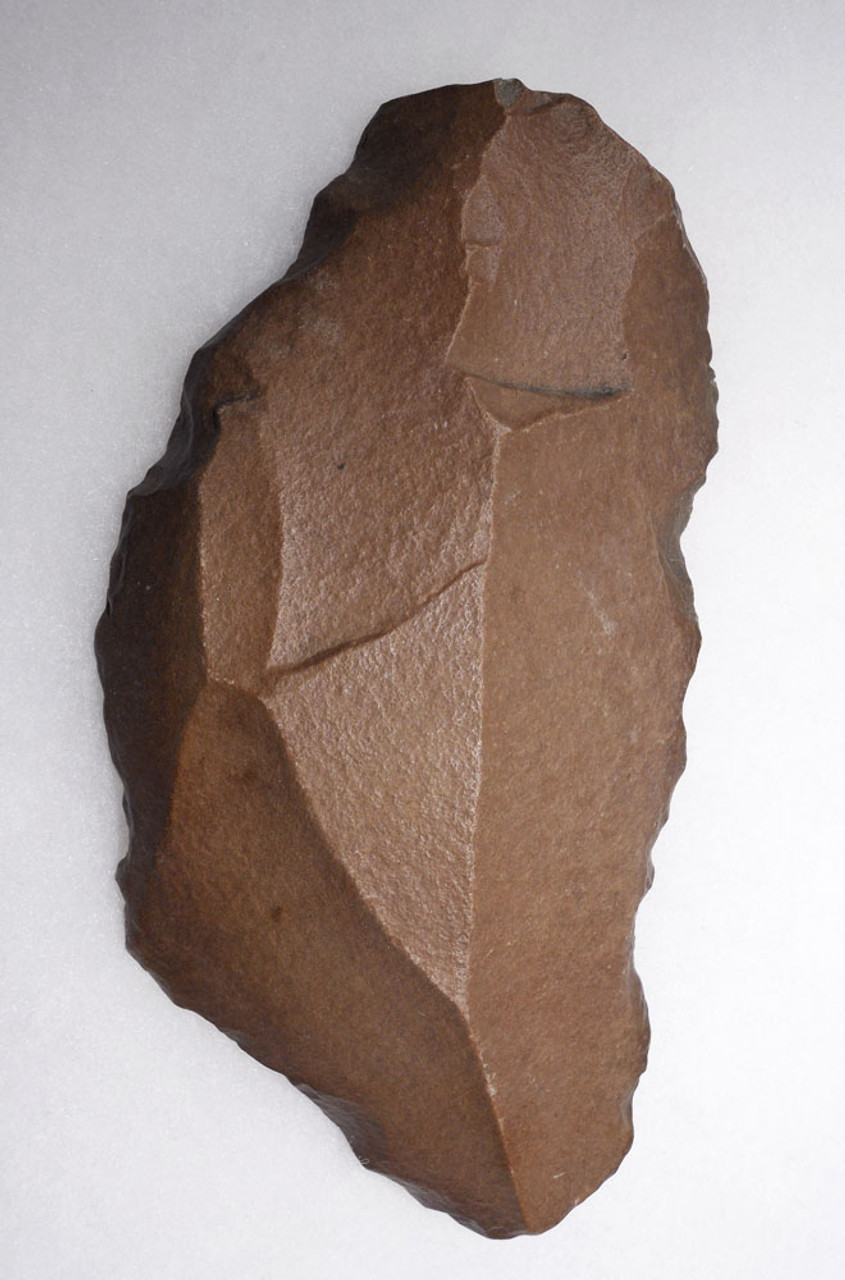Product Description
SEE MORE ACHEULEAN LOWER PALEOLITHIC STONE TOOLS
This African Acheulean prehistoric stone tool is a large UNIFACIAL KNIFE. It was made and used by Homo ergaster (African Homo erectus) and is a SUPERB example of the first use of a knife by primitive humans! It was surface-collected from an exposed Acheulean site in the Northern Sahara Desert of North Africa. This Lower Paleolithic tool represents the first intelligent design type known to science that was made by primitive humans. Prior to these Saharan Acheulean tools, only crude pebble tools existed in the human fossil record. African Acheulean FLAKE TOOLS are much scarcer on the market than the more obvious shapes of Acheulean hand axes due to flake tools being harder to discern from the plentiful surface debris stones on the desert floor.
Very seldom seen in private collections, a tool this type is rare from Africa with most Acheulean specimens collected being handaxes. The unifacial blade is a type of flake too fashioned from a large flake that was struck from an even larger tool core source. It would have been perfect for use in butchering the large game that thrived in Northern Africa during the days of Homo ergaster. Edge photo shows secondary flaking all down the cutting edge to sharpen in prehistory. The cutting edges of this specimen exhibit excellent workmanship and are intact. Extensive flaking on the edges is evident as is the original striking platform on the proximal end. A wonderful sheen is present on the surface of the stone artifact called 'Desert Varnish'. This patina is caused by millennia of exposure to the blowing sands depositing iron and silica to the stone surface and creating an effect of a 'polish'. The bi-color hue is caused by the tool laying on one side undisturbed for hundreds of thousands of years, and that side taking on the pigment of the red Saharan sands.
Acheulean Lower Paleolithic knives from the Sahara are RARE and often overlooked in field collecting and rarely seen in collections. While handaxes are rather obvious in design and easy to therefore, recognize when collecting on a site, smaller flake tools have less obvious features at first glance and easily blend in with surrounding scrap flakes and natural stones. The vast majority of private collections lack Acheulian Saharan flake tools in comparison to handaxes from the same period.
 US DOLLAR
US DOLLAR
 EURO
EURO
 AUSTRALIAN DOLLAR
AUSTRALIAN DOLLAR
 CANADIAN DOLLAR
CANADIAN DOLLAR
 POUND STERLING
POUND STERLING
















